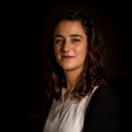In the same section
-
Share this page
MSc in Physics Engineering
Master taught in English
Programme
Specific formation starts in BA3 with about half the courses in applied mathematics and fundamental physics (quantum, semiconductor and solid-state physics, optical physics, electronics and telecommunications), while the other half is shared with all other engineer students.
The first year of the Master's programme is divided between introductory lectures on atomic and nuclear physics and applied lectures such as medical imaging, laser, plasma or nuclear-reactor physics. Students also visit a nuclear power plant and experiment on a power-plant simulator, as well as on a research reactor at the Belgian Center for Nuclear Energy (SCK-CEN). Finally, the students must complete a project, which can take different forms: a large-scale project in collaboration with a company or a research institute, a development cooperation or a pedagogy project.
The second year of the Master offers students five options: photonics, medical radiophysics, mathematical modeling of systems, quantum applications and advanced nuclear engineering. The programme is supplemented by an optional internship in a company and a wide choice of courses, including a week of courses and visits to CERN.
Several courses are taught by professionals from research centers like IMEC and from private companies and public agencies like AFCN, Engie...
Finally, the Master thesis provides an introduction to applied and fundamental research. Learn more about Master theses and internships.
The second year of master can also be realised at the french INSTN, leading to a double degree in Advanced Nuclear Engineering.
What's next?
Physics engineers generally work in sectors such as energy industry, nuclear control, medical radiophysics and applications, as well as optical telecommunications and photonics. Many physics engineers also do fundamental or advanced industrial research.
The careers of physics engineers are in practice extremely varied and cover all industrial sectors where physics and applied mathematics are used. These include telecommunications, environmental technologies, microelectronics, advanced devices, computer science, as well as economic sectors where their modeling aptitudes are particularly appreciated, especially the banking, finance and insurance sectors.
Testimonials of our alumni
- Isabelle Hendrickx (Physics Engineer)
-
Graduated in 1999, Isabelle joined Tractebel directly in the nuclear department as a safety engineer. In parallel with her professional activities, she obtained a special bachelor's degree in energy, followed by an Executive Master in Management at the Solvay Business School. Over the years, she held various management positions in the nuclear department, before returning to the field of electrical networks in autumn 2014, as product manager. In 2019, she took over the head of Tractebel's "Energy" activities, but returned to networks in August 2020, joining Elia as Head of Program Management. She has also been a member of the EPB Alumni Board since 2014.
In my career, I quickly stopped using much of the advanced technical knowledge I had received at the School. Nevertheless, these studies provided me with crucial elements in my professional success and in my personal construction. First of all, as the manager of a team of engineers, I had to speak their language and be able to challenge them in order to be respected. I acquired this general engineering culture through my studies. I followed the "Physics" programme, but my team was made up of engineers from all horizons, so the multidisciplinary aspect was important. Then, these studies taught me critical thinking, the search for alternatives, multi-criteria consideration, open-mindedness, respect for doubt, not to mention autonomy. I found all these elements in the young engineers from ULB, in a more marked way than elsewhere. Finally, I loved these five years at Polytech and built up very good relationships with incredible people who continue to embellish my life. - Serena Bolis (Physics Engineer)
-
Having obtained her Bachelor's degree from the Politecnico di Milano (PdM), Serena enrolled in a joint degree between ULB and the PdM, as part of the T.I.M.E. network. This is how she joined the Master's degree in Physics Engineering at EPB in 2009. Very interested in research and experimental aspects, Serena wrote two dissertations, the first in Brussels and the second in Milan. She was then awarded a research grant to complete a doctoral thesis under the joint supervision of ULB and UGent (2013-2018).
From October 2016 to March 2017, she would spend time in Oxford, before obtaining her double thesis degree. During her PhD, Serena built liquid crystal cells, which she then used to obtain the laser effect or propagate solitons. Her multidisciplinary work is experimental and theoretical, consolidated by innovative numerical simulations. This enabled her to study the microscopic interactions between liquid crystals, polymers and light, in order to design photonic devices. A clarinet player, Serena has taken part in many concerts with the ULB orchestra and wind band. She is still active there today.
Contacts
President of study programme
Campus du Solbosch - CP 194/05
Avenue F.D. Roosevelt, 50
1050 Bruxelles
Vice-president of study programme
Campus de la Plaine - CP 229
Boulevard du Triomphe, ACC.2
1050 Bruxelles
Conferences and debates
- Nuclear power: a stopgap, a strategy or a liability? with Matteo Zanetti (2025)
- Realisation of a New Research Infrastructure in Belgium : MYRRHA with Hamid AÏT ABDERRAHIM (2019)
- Thermonuclear fusion: a challenge and an opportunity for humankind with Jef ONGENA (2018)
- Debate on Belgian nuclear fission with Pierre-Etienne LABEAU and Michel HUART (2017)
